4B | Topic studio
INSTRUCTOR: ISMAELLY PENA
ARCH 402
TOPIC | Choosing the Margin
An exploration of spatial justice practices and critical representation
The studio investigated Bell Hooks’s concept of the margin as seen in architectural and urban design interventions. The studio will examine existing modes of spatial and representational practices of architectural design focusing on projects that have been coined as social, participatory, and community-based projects. Often, these are projects that share a common denominator of addressing the most pressing issues of our global cities: housing, migration and displacement, equitable access to public spaces, post-disaster remediation, public infrastructure, etc.
Through a four-part assignment, the studio’s aim was to analyze and catalog existing modes of addressing these contemporary issues through the lens and tools of architecture and challenged us to look outside of architecture for inspiration to develop new approaches, narratives, tools, etc. that address these questions at varying scales. Additionally, questioning modes of traditional architectural representation prompted us to explore unrecorded historical narratives, temporal happenings, and spatial/political terminology like informality and the unhoused. The studio’s representational and conceptual methodology would be to keep the question of “who, what, when, and for whom” the design addresses and or responds to.
PART ONE
Presented in a pamphlet format,
This project will explore two Los Angeles examples and accompanying tones along with diagrams and a character-based narrative to identify the issues surrounding this idea of spatial privilege, value, and where it exists. The underlying site of the project as a whole is inside the margins, or places we look past, walk past and think little of in terms of value. These components produce an inquiry and discussion of a system that establishes a new network of public space within what is known to be the margins in the city of Los Angeles.
The analysis and comparison of these sites paired with the conceptual manifestation of community input and opinion made for the foundation of a discussion in Part Four that introduces a self-chosen site along with curated strategies for community engagement, culminating in a design proposal.
PART FOUR
This project, inspired by Michael de Certeau’s Walking in the City, aims to deformalize public and private space in the pedestrian threshold by examining the lack of public space and the excess of vacant lots in South Central Los Angeles. Capitalizing on these disused sites includes bolstering the fragmented bicycle infrastructure within the overall test site, allowing for a traversable circuit of micro public interventions throughout a single route that has been informed by the individuals in the specific community. The strategy of a modular frame is employed to unitize the variable responses to the issues of the community and to serve more to the pedestrian than the sidewalk alone. To challenge a new urban network system, these components produce an inquiry and discussion of a system that establishes a new network of public space in the city of Los Angeles. This network is successful in how it serves as an addition to our existing notions of public space and its accessibility to them, with the community (the users) involved in the infill process.






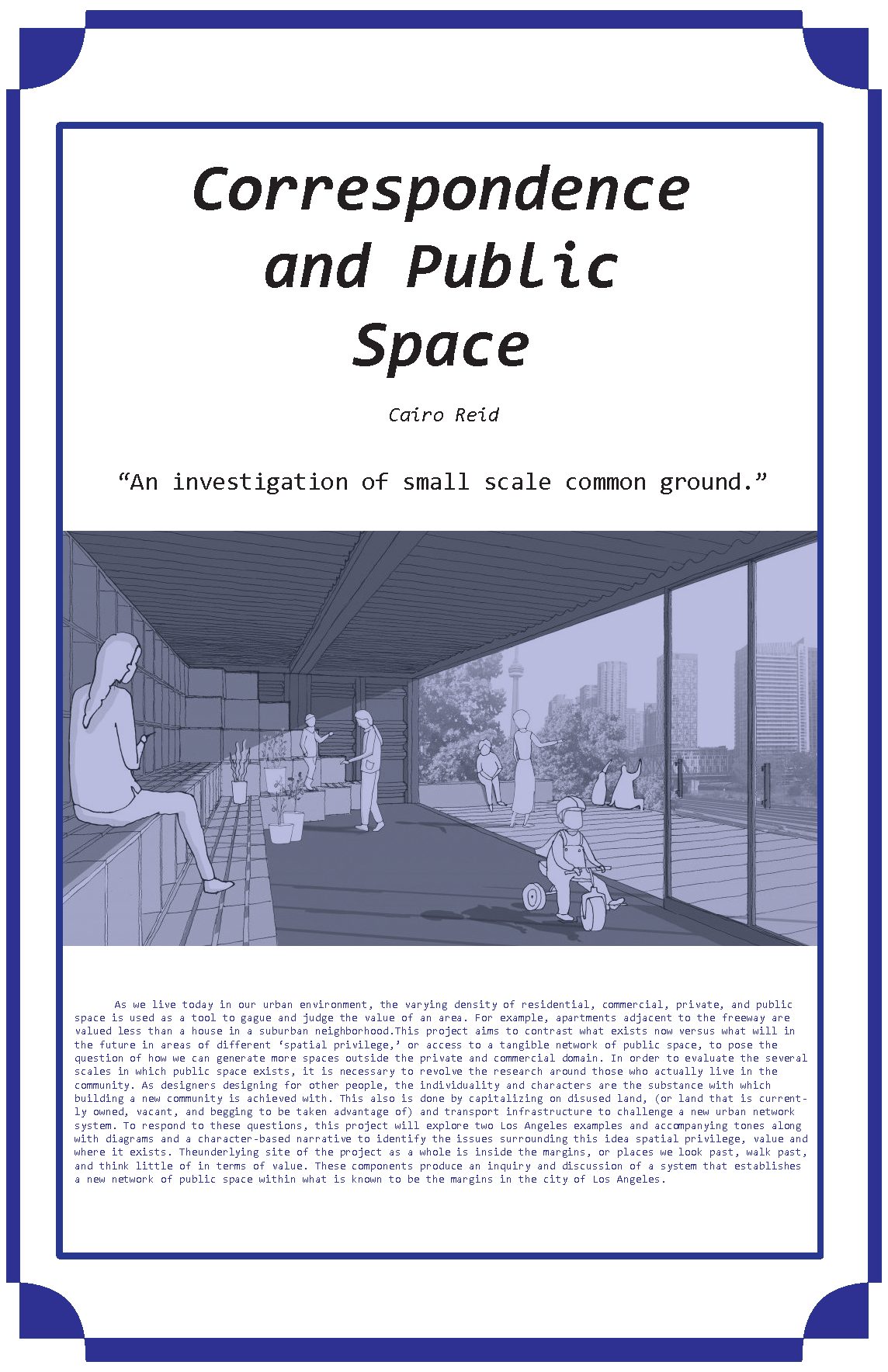
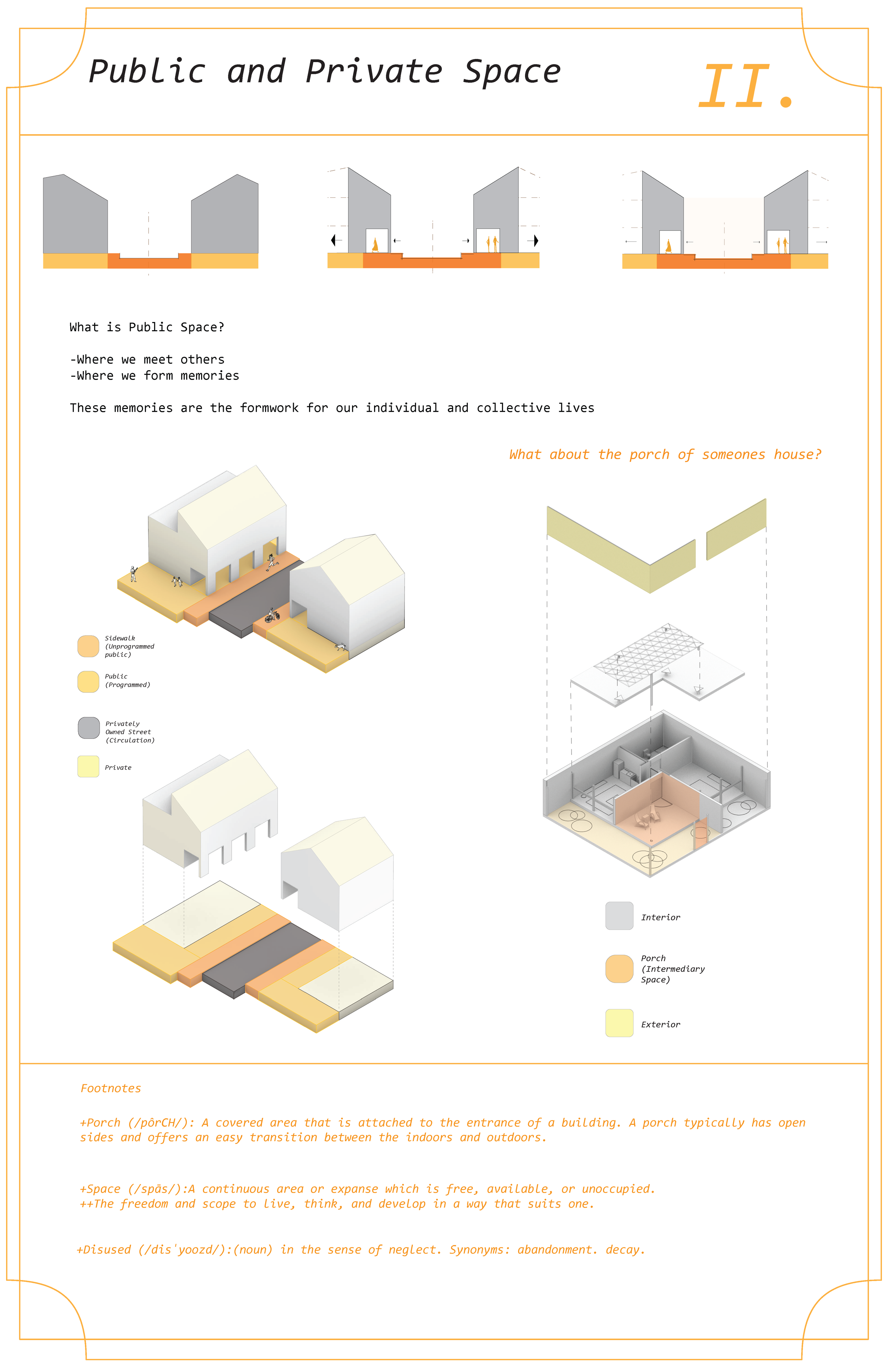
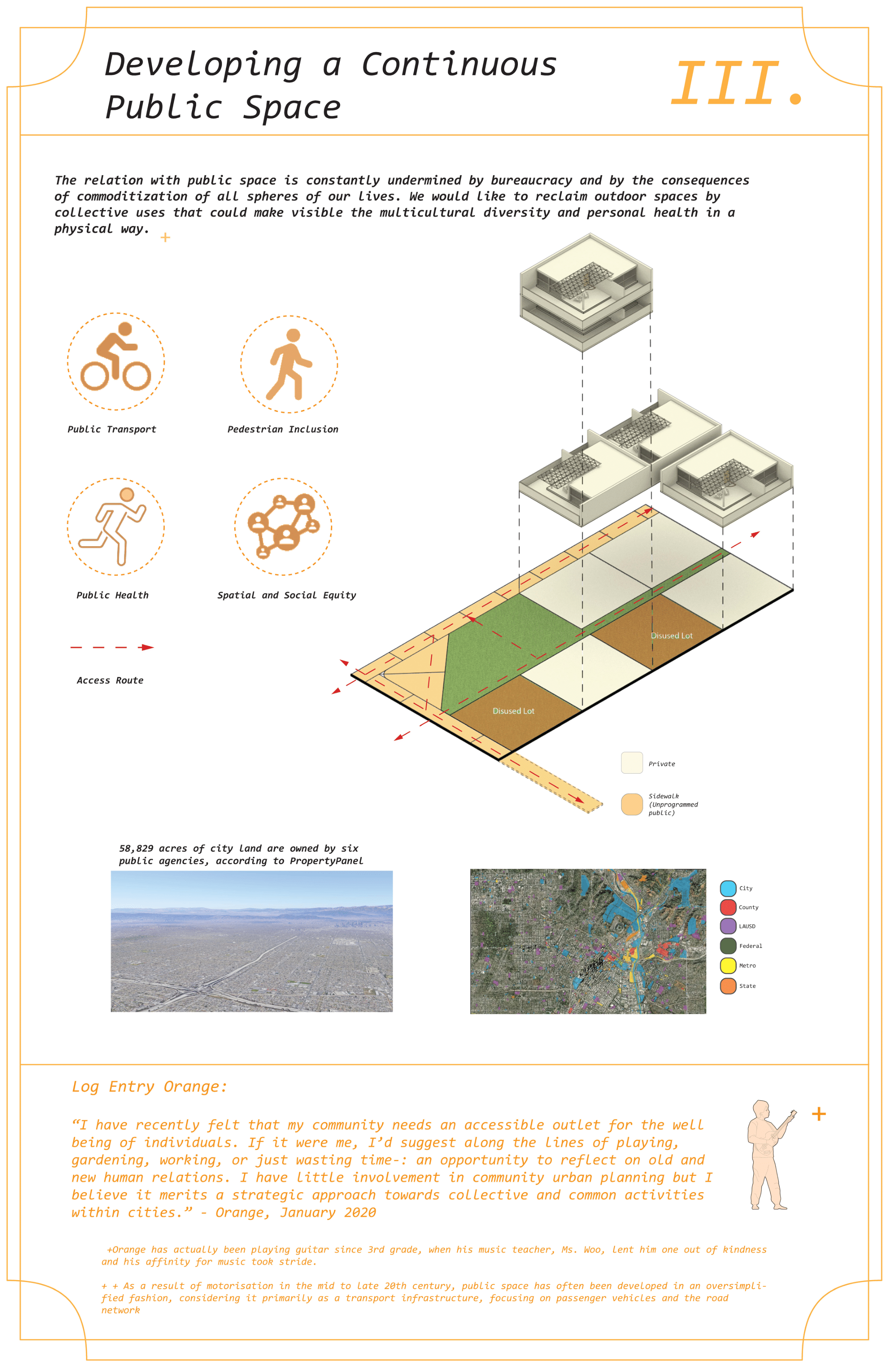



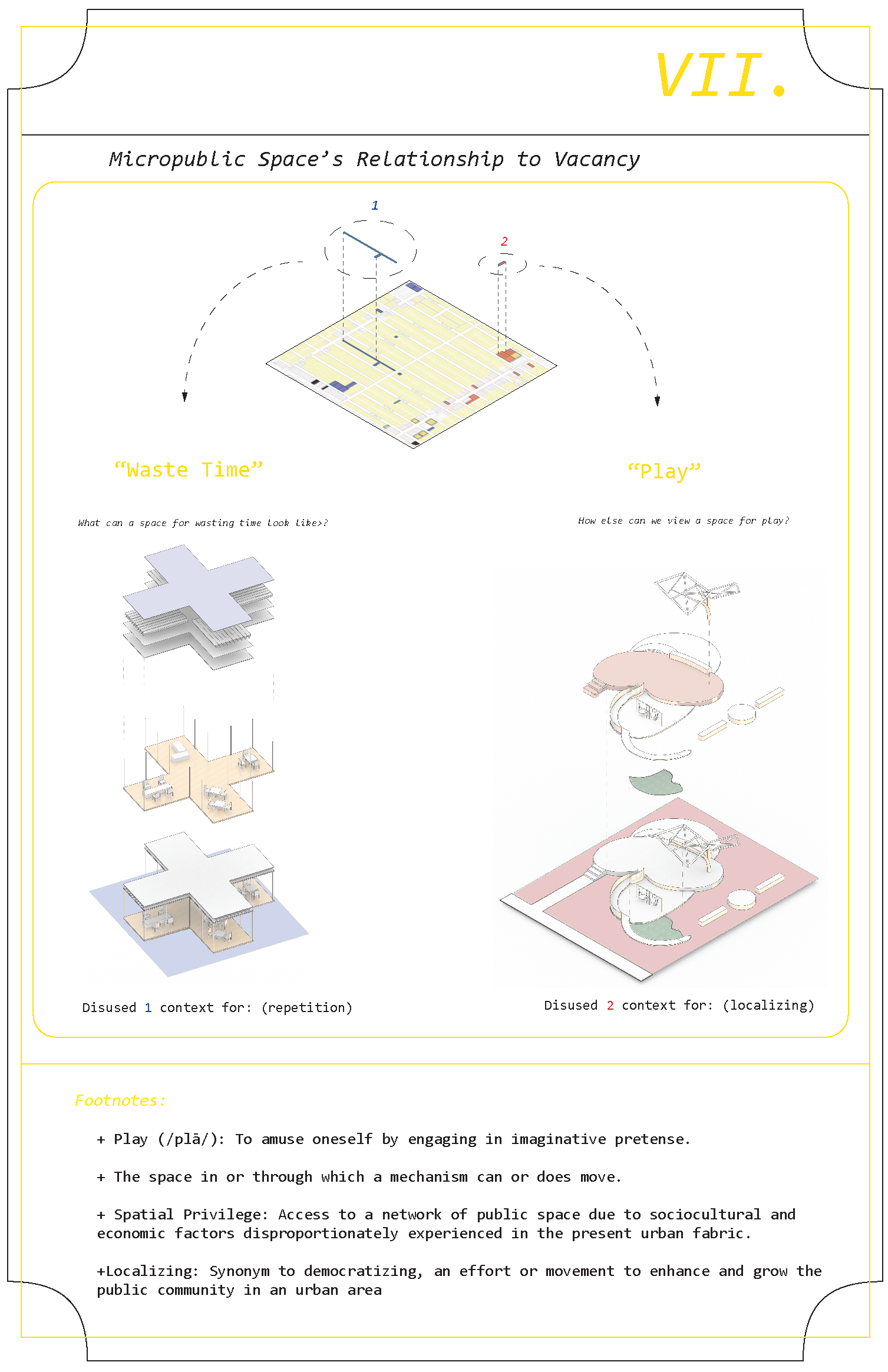
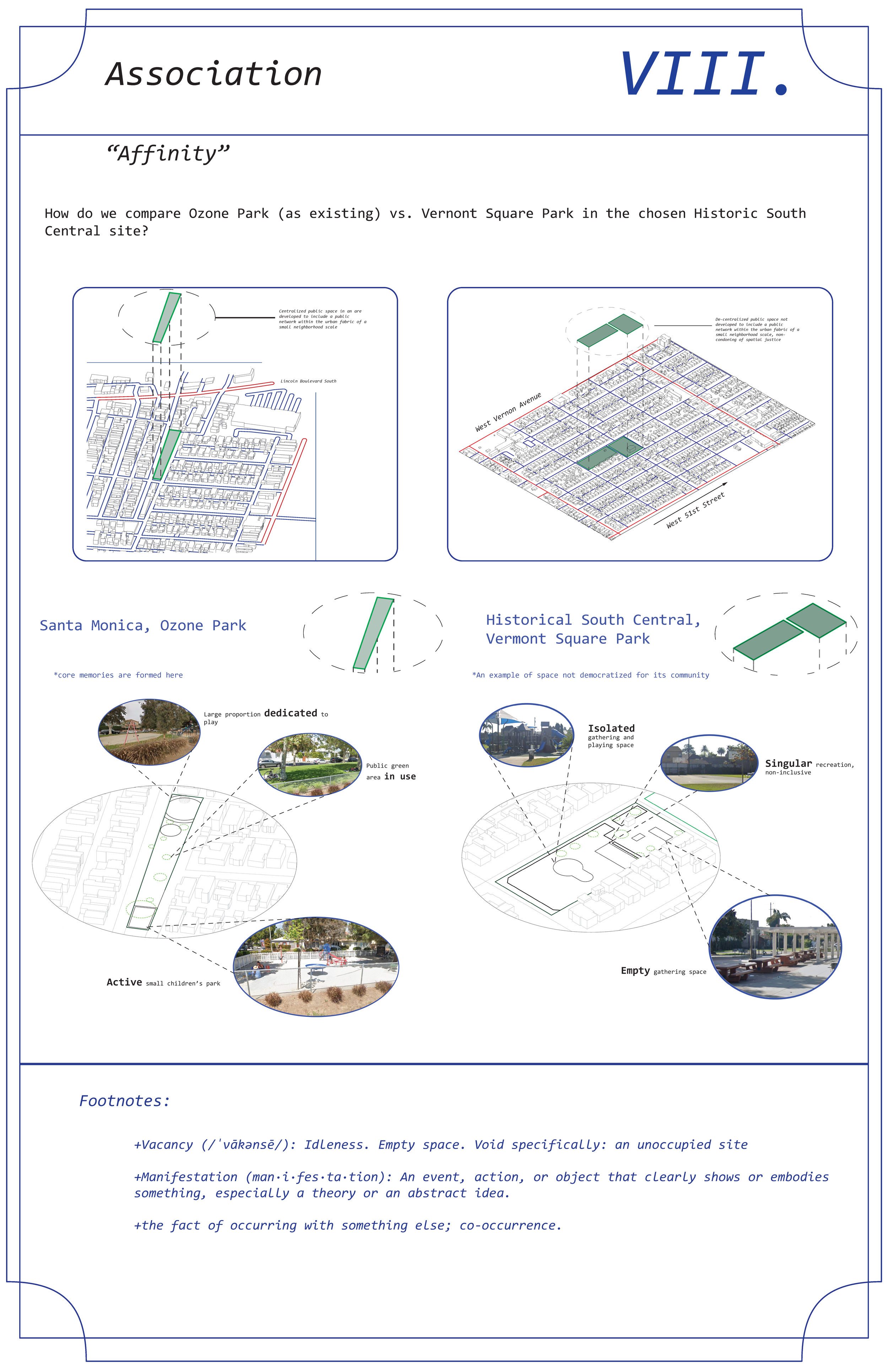



![persp1 [Converted]-1.png](https://images.squarespace-cdn.com/content/v1/6099813a1d96983d292f4e73/1652674652530-026M7WP5J6SISR0A47JL/persp1+%5BConverted%5D-1.png)

![persp2 [Converted]-1.png](https://images.squarespace-cdn.com/content/v1/6099813a1d96983d292f4e73/1652674673633-H3NX9H329H6PE6W6DJ8K/persp2+%5BConverted%5D-1.png)

![persp3 [Converted]-1.png](https://images.squarespace-cdn.com/content/v1/6099813a1d96983d292f4e73/1652674687962-65S37ZD4PFGH2JUNJWLC/persp3+%5BConverted%5D-1.png)